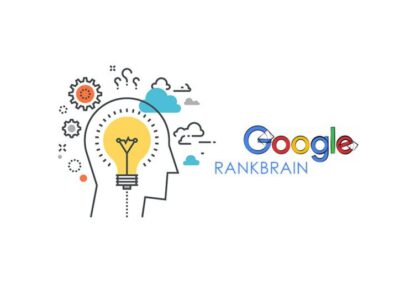The mobile-first index is a major shift in the way Google crawls and indexes websites. It will prioritize the mobile version of a website when determining rankings, rather than the desktop version. This article will provide an overview of the mobile-first index, as well as answer common questions such as when it will be implemented, whether responsive design is enough to prepare for the change, what PageRank means for a mobile index, and why Google isn’t using two indexes. Finally, it will look at what still isn’t clear about the mobile-first index and offer a conclusion.
Questions and Answers
When is the mobile-first index going to be implemented?
The mobile-first index is expected to be fully implemented in 2018, though it has been speculated that it could be as early as late 2017. Google has not yet provided an exact date for when the new index will go into effect, but they have said they are working hard on making sure that it happens soon.
Does responsive design really mean you don’t have to do anything to your site to prepare for the mobile-first index?
Responsive design does not automatically mean that you don’t need to do anything else to prepare for the mobile-first index. Although having a responsive website is a great start, there are still a few things that webmasters should do in order to ensure their websites are ready for the new index. This includes optimizing page loading speeds, making sure content is easily accessible and readable on smaller screens, and ensuring all content is visible on both desktop and mobile versions of the website.

Will desktop versions of websites still be indexed?
Yes, desktop versions of websites will still be indexed by Google’s search engine. While Google will prioritize the mobile version of websites in its search results, it will also continue to crawl and index desktop versions of sites as well. This means that webmasters should still make sure their desktop versions are optimized for search engine optimization (SEO).
Will PageRank be used for a mobile index?
Yes, PageRank will still be used with the mobile-first index. The algorithm works by measuring how many other websites link back to a particular webpage or website; this helps Google determine which pages are more important than others and thus should rank higher in its search results. It’s important to note that while PageRank will still be used with the mobile-first index, it may not necessarily carry as much weight as it does with traditional SEO ranking factors since other factors such as page loading speed and user experience may become more important in determining rankings on mobile devices.
Why doesn’t Google just use two indexes?
Google currently uses one single index for both desktop and mobile searches; however, using two separate indexes would require significant resources from Google and could lead to inconsistencies between different search results depending on whether someone is searching from a desktop or a mobile device. Therefore, Google has chosen to use one single index instead of two separate ones in order to ensure consistency across all types of devices.
| Question | Answer |
| When is the mobile-first index going to be implemented? | Expected in 2018, could be late 2017. |
| Does responsive design mean you don’t have to do anything to your site? | No, still need to optimize page loading speeds and content. |
| Will desktop versions of websites still be indexed? | Yes, but should optimize for SEO. |
| Will PageRank be used for a mobile index? | Yes, but may not carry as much weight. |
| Why doesn’t Google just use two indexes? | To ensure consistency across all devices. |
What Still Isn’t Clear
Google has been very vague about the details of the mobile-first index, leaving many questions unanswered. While we know that it will primarily affect how websites are indexed and ranked by Google, there are still a number of open questions about what exactly this means for webmasters.
Will Mobile-Only Content Be Indexed?
One of the biggest questions is whether content that is only available on mobile versions of a website will be indexed. This could include content such as images or videos that are only available on the mobile version of a website, or even features such as location tracking or in-app purchases. It is not yet clear if these types of content will be indexed by Google’s mobile-first index, or if they will be ignored.
Will Mobile Rankings Differ from Desktop Rankings?
Another question is whether the rankings for mobile searches will differ from desktop searches. Google has said that they plan to use the same ranking algorithms for both desktop and mobile searches, but it is still unclear if there may be any differences in how sites are ranked for different devices. It is possible that some sites may rank higher on one device than another due to factors such as page speed or user experience, so it is important to understand how these factors may affect rankings in order to prepare for the mobile-first index.
Will There Be a Delay Between Desktop and Mobile Indexing?
Finally, there is also the question of whether there will be a delay between when a website is indexed on desktop and when it is indexed on mobile. Google has said that they plan to use a single index for both desktop and mobile searches, but it is not yet clear if this means that all websites will be indexed at the same time or if there may be some delay between when a website appears in search results on different devices.
Conclusion
As the mobile-first indexing continues to roll out, it’s important for webmasters and SEO professionals to stay informed about the changes. The new indexing system is designed to help improve the search experience for mobile users, so it’s essential that websites are optimized for both desktop and mobile devices. It’s also important to be aware of the potential implications of this change on your website’s search engine rankings.
Google has provided some guidance on how to prepare for the mobile-first index, but there are still a lot of unanswered questions. It’s unclear whether page speed will be taken into account when ranking websites in the new index or if PageRank will still be used. Additionally, it’s not clear how Google will handle sites that have separate mobile and desktop versions of their content.
Overall, while there is still much that isn’t known about the mobile-first index, it is clear that webmasters and SEO professionals need to pay close attention to this change and take steps to ensure their websites are optimized for both desktop and mobile devices. By following best practices for responsive design and monitoring their website performance on both platforms, webmasters can ensure their sites are prepared for the upcoming changes.






